Simplifying life, and death cleaning
I have too much stuff, and it’s been a constant source of stress, particularly since I got injured 4 years ago. I made some significant reductions to it last year, but there’s much more to deal with. Over the past few days, Cathy and I have finally dealt with the worst of it. “Worst” in the sense that it’s stuff that is highly unlikely to ever get used.
There’s no term in English for the removal of unnecessary stuff as you approach the end of your life, but in Swedish it’s called döstädning, which means death cleaning. This I learned from a charming little book by Margareta Magnusson, “The Gentle Art of Swedish Death Cleaning” that I borrowed from the Whitehorse library last week. While I was already mentally in gear for this cleaning, I thought the book might be therapeutic. It probably wasn’t, but I read the entire 107 pages in one sitting so it obviously had something I needed.

When I was getting rid of stuff last Fall, I believed that I was dying and so it actually was death cleaning, trying to reduce what Cathy was going to have to deal with. But I donated some significant material to one museum and made arrangements for the donation of a great deal more to another, so that was a good start. Now, I’m just simplifying life by getting rid of material that, although I still want a lot of it, is not needed.
As I started going through stuff that really needed to depart from my home a few weeks ago, the garage had become pretty much unusable. A notice that this area was going to have a Community Yard Sale on June 3rd spurred my efforts, but I started pulling stuff out of one of our outbuildings, a more manageable project than the garage, first.
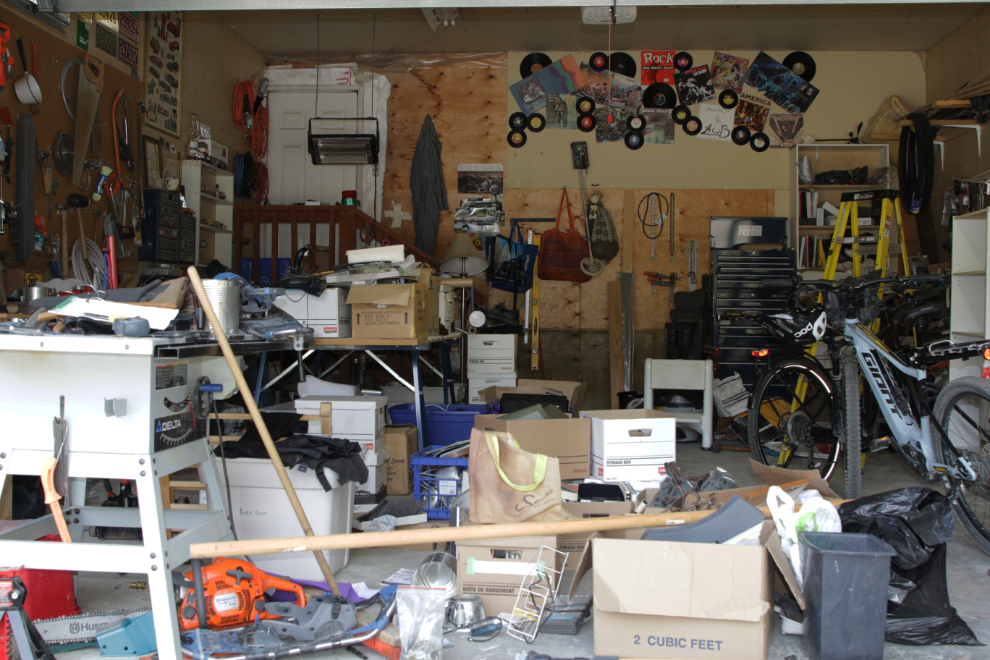
The most significant item to come out of our meat-smoking building was Cathy’s golf equipment, which hadn’t been used for a few years.
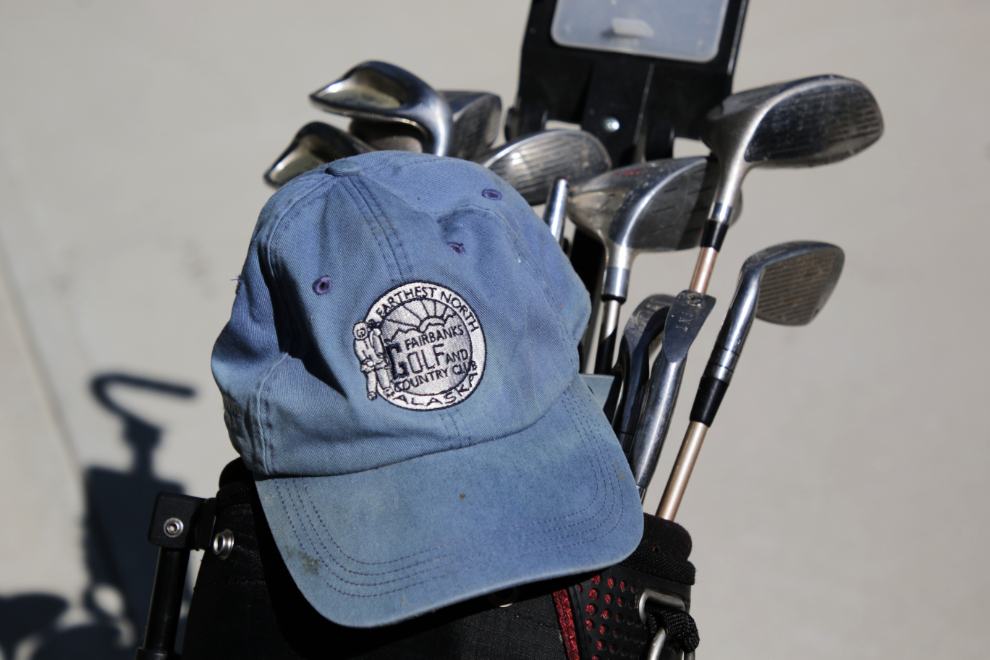
I had four armoured motorcycle jackets, and really only need two, one for cold weather and one for normal weather. By taking photos of all four I was able to decide which ones to keep. The jacket in the next photo is a keeper – worth over $600, I won it from Yamaha Canada for a photo of my V-Star on the Alaska Highway 5 years ago. An ad in the Facebook Buy and Sell page on Friday got the excess ones new homes very quickly. That was also a good way to get my head into “selling” mode for the garage sale the next day.

Books comprise much of the bulk and the vast majority of the weight of the stuff that had to go. Many had been carted around since about 1966 when I first started collecting BC history material. The next photo shows a few of them.

Maps and posters are problematic because they take up so much space. I offered this bag full of WP&YR railway calendars (about 45 of them) for $20 during the garage sale and that got them re-homed. They were scanned and put online recently – see my White Pass & Yukon Route railway calendars page.

Getting started on the garage sale setup. I was so crazy-busy I didn’t even take any photos of the driveway – there was a lot of stuff!
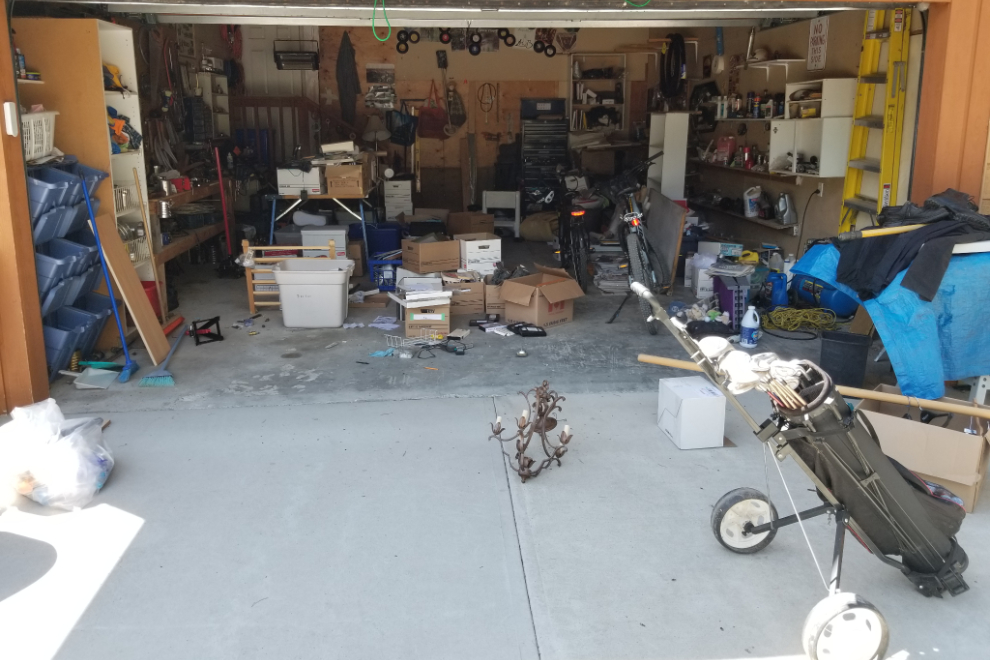
The garage sale was very successful. I had advertised it as my final clearout of stuff, and said that things would be cheap from 9-noon then most things would be free until 2 pm, after which time the landfill would be the next stop. Shortly after I posted a summation of the day on Facebook, a friend who works at the charity thrift store in town showed up and took almost everything that remained! 🙂
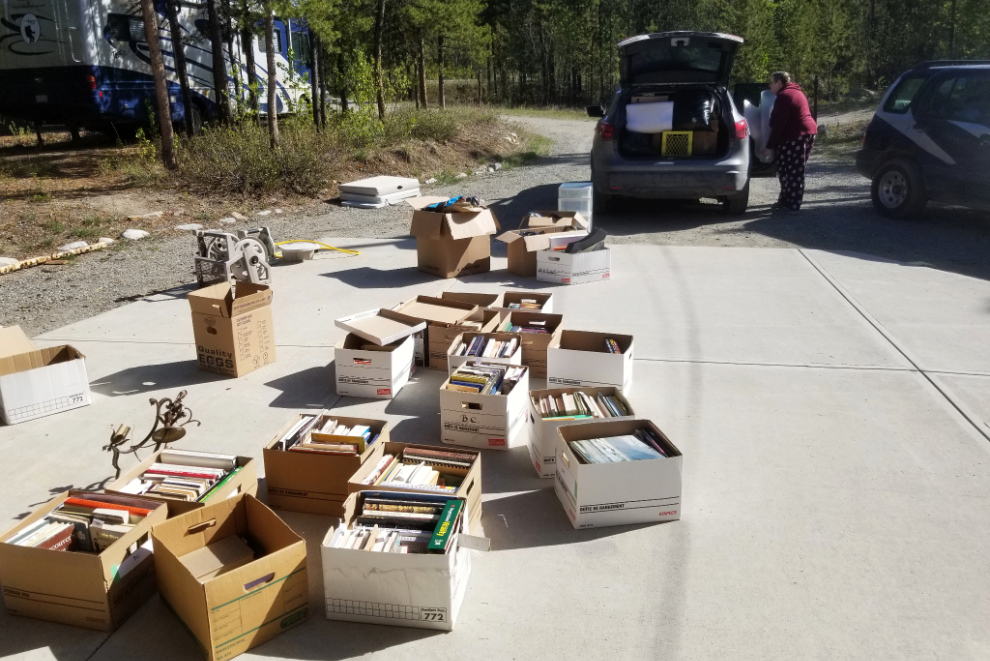
The final bulky things, a couple of shelving units, were gone very quickly after I posted them on the Buy and Sell page for free.

The garage is now empty of “stuff” – downstairs I have 28 file boxes of papers that will be scanned and discarded over the coming months, but if I need to get rid of it all in a hurry, the MacBride Museum wants it, as they’re basically my research files.
The predominant feeling now is relief, and I simply won’t let my brain wander off in any other direction. I still have enough in the house to keep me as busy as I choose to be, forever.
The “free” part of the garage sale was fun. Not just the “REALLY?” responses to everything from maps and books to a lounging chair but also some warm fuzzies like being able to give Cathy’s golf gear to a young fellow who really wanted it all but didn’t have $50.
This cleaning followed soon after a very difficult one that Cathy had to deal with. When she was cleaning out her mom’s stuff following her death in Ontario on March 31st, she found a fur coat. She sent me photos, and I asked her to send it to me so I could find a proper home for it, because it certainly didn’t belong in Ontario. Cathy’s dad bought it for his wife in about 1972 while he was working on a heating job in Tuktoyaktuk (Charlie was a tinsmith) – the muskrat coat had been made in Aklavik. Although reluctant because she was already overwhelmed with things that had to be done, Cathy did mail it to me. I put an ad on the Buy and Sell page and had a lot of response. The coat soon found the perfect home – its story had come full circle and it would be going back home to its birthplace on the Mackenzie Delta. The young woman who bought it is from Inuvik, but was in Whitehorse so I could deliver it to her an hour after we talked. Her initial message to me said in part: “I am inuvialuit who hunts, harvests, traps muskrat & have family ties in Aklavik as well. Please trust me this will be in good hands & past down to family after me. I do not plan on selling this, I would keep it as long as I live.” I’m extremely pleased that we were able to facilitate this next chapter in the coat’s story. Because happy endings are always nice, I’ll finish this post with 4 photos of the beautiful coat.
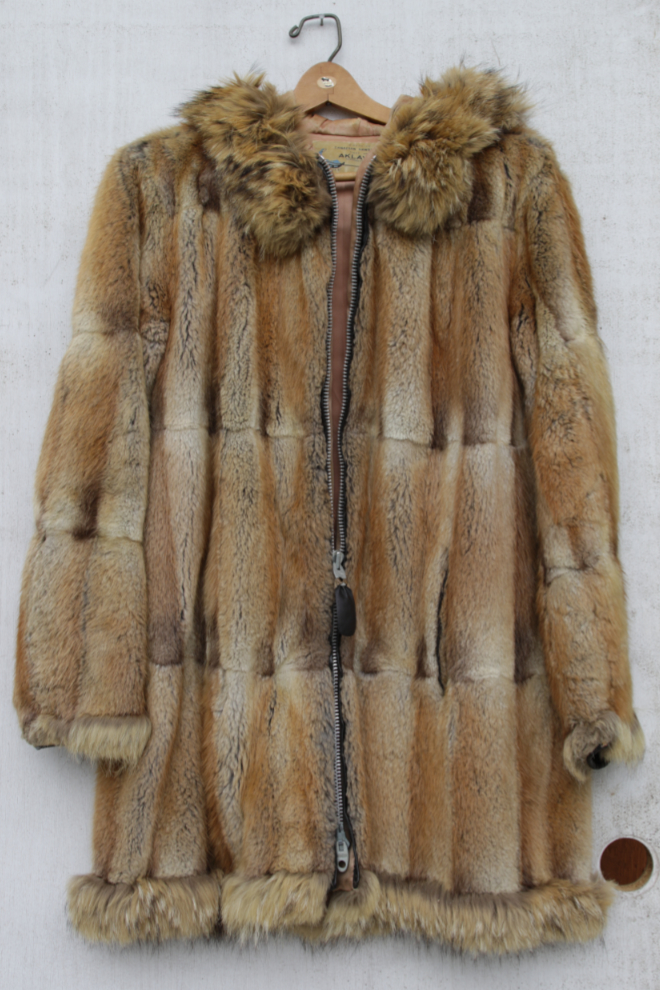
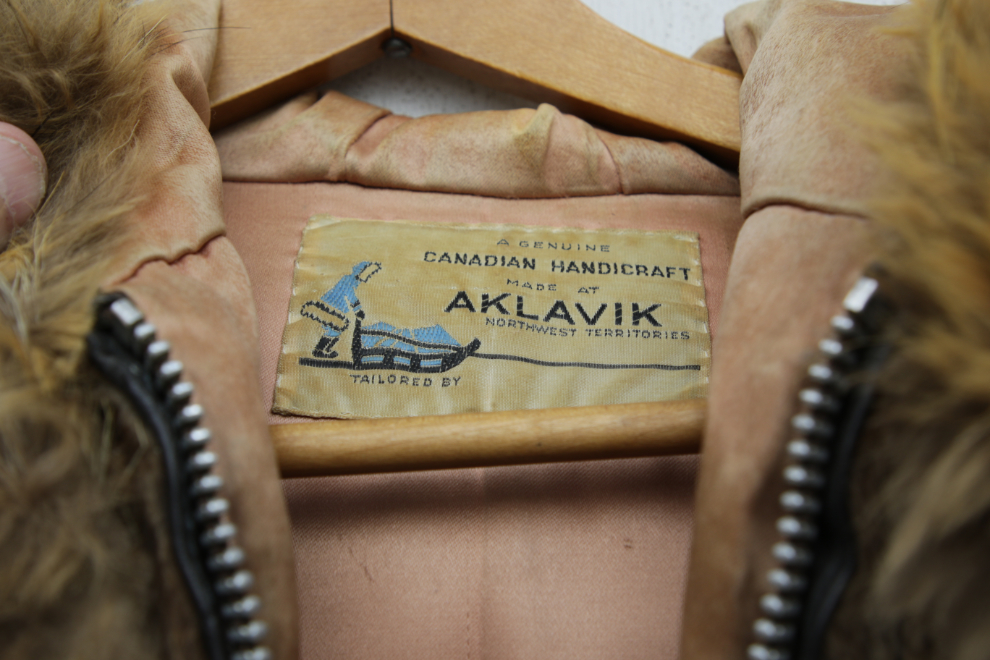
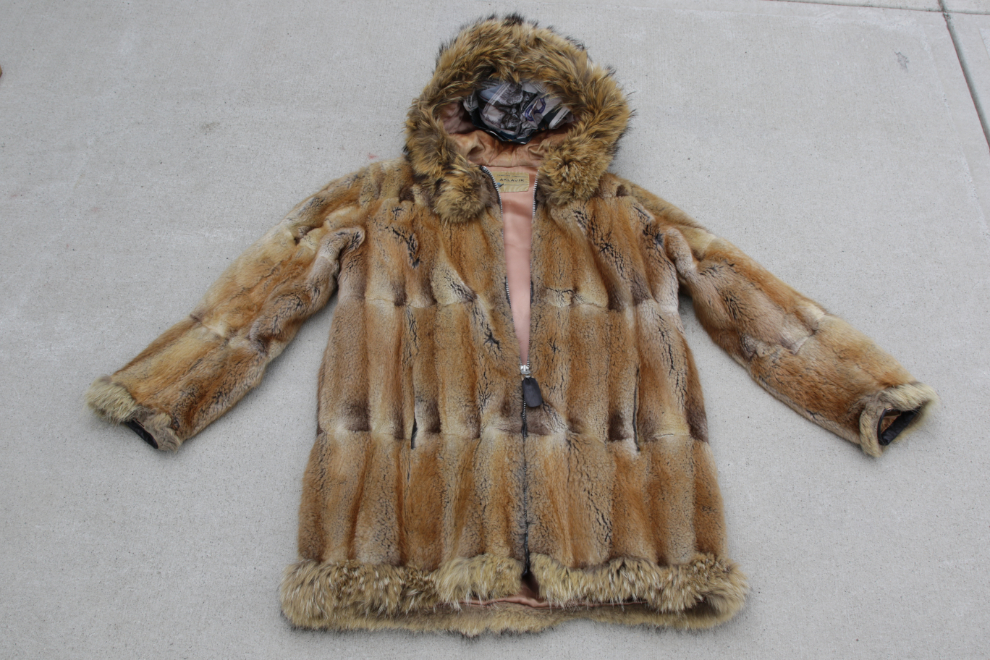
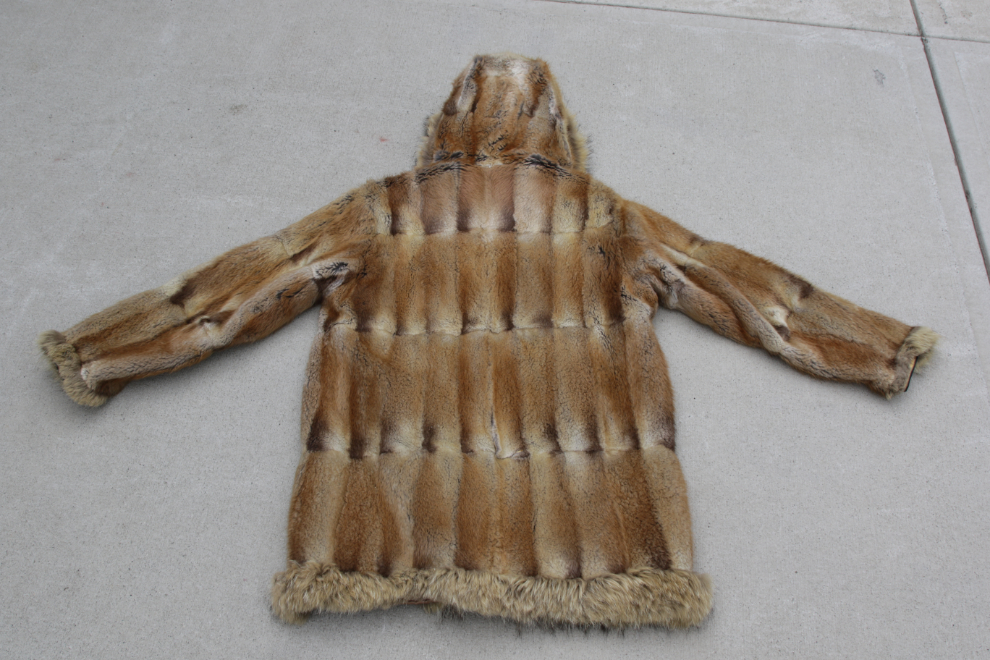

Comment Hello, Murray. It’s the bottom of the world calling the top. Congratulations on the great Garage Sale … a wonderful start to sorting, clearing, selling, giving away and finally organising the keepers. I am sending an email to the last address I have, the yukonalaska one; it may or may not still be a working one ….. Your blog is as interesting as always.
It is so wonderful to hear from you, Marie! I’ve sent you an email.
I always think I need to do this. Hitting 70 in December is a wake up call. Cathy’s Moms coat is beautiful and looks well taken care of. It’s so nice that the woman that bought it will cherish the history. It’s good you sent your cherished items to new homes and the free items to those it need! Enjoy your clean garage and God Bless you with many blessings in the future.
Thanks, Patsy. It’s such a difficult job but I think most people in our world need to do it, and I hope talking about it helps make it easier.